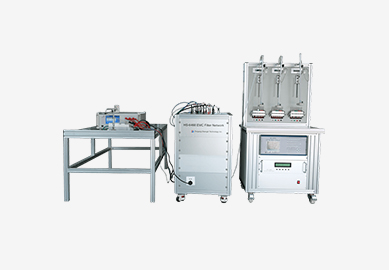The use of a water meter test bench is common among water utilities in the US and abroad for verifying new meters before they are installed or testing existing meters that are showing signs of age. These specialized test benches allow the utility to run tests under controlled and monitored conditions to ensure that the meter is operating correctly and meeting accuracy standards. They are available in a range of sizes to accommodate different meter types and sizes.
Test benches are used to test the performance of a meter under specific conditions that replicate those found in the field. The meter is connected to the test bench and then water is circulated through it at a known flow rate and pressure. The meter's performance is then compared to the reference standard or calibration certificate to determine whether it meets accuracy requirements.
For this study, the water meter test bench was set up with three brand-new DN15 positive displacement meters as master meters for comparison purposes. The master meters were paired with another identical meter for each test to provide redundancy in the measured results. Each meter underwent several tests at various flows to establish an error curve. The curves were then compared to verify that the meter's error of indication did not change significantly under intermittent flow conditions.
The test rig was designed to reduce the time it takes to conduct each test. This was accomplished by eliminating the need for bolting each meter into place. The meter is placed on the test bench and held in place by a hydraulic clamping mechanism. This allows the meter to be quickly and easily tested, even if it is being mounted with other meters on the same test bench. The resulting time savings can be significant when testing a large number of meters at the same time. The bench also features an integrated computer that keeps track of the meter inventory and provides the utility with an accurate record of each meter's performance during the test. This data can be used to determine the meter's performance over time, and help the utility identify problem areas. It can also be used to develop a more effective maintenance program for the meter. In addition, the meter test bench can be used to estimate resistivity, total dissolved solids (TDS), and salinity factors. It is important to remember that these values are only an estimate unless the meter has been calibrated at a higher level. If not, the meter may be producing readings that are significantly lower than they should be. This is because the conductivity sensors are subject to a variety of environmental conditions and must be properly stored and maintained to achieve accurate results. If they are not, the sensor will deteriorate and may not be able to accurately measure conductivity in future tests. This is why it is important to always use a high-quality, reliable conductivity sensor when establishing an error curve or testing water meters.

